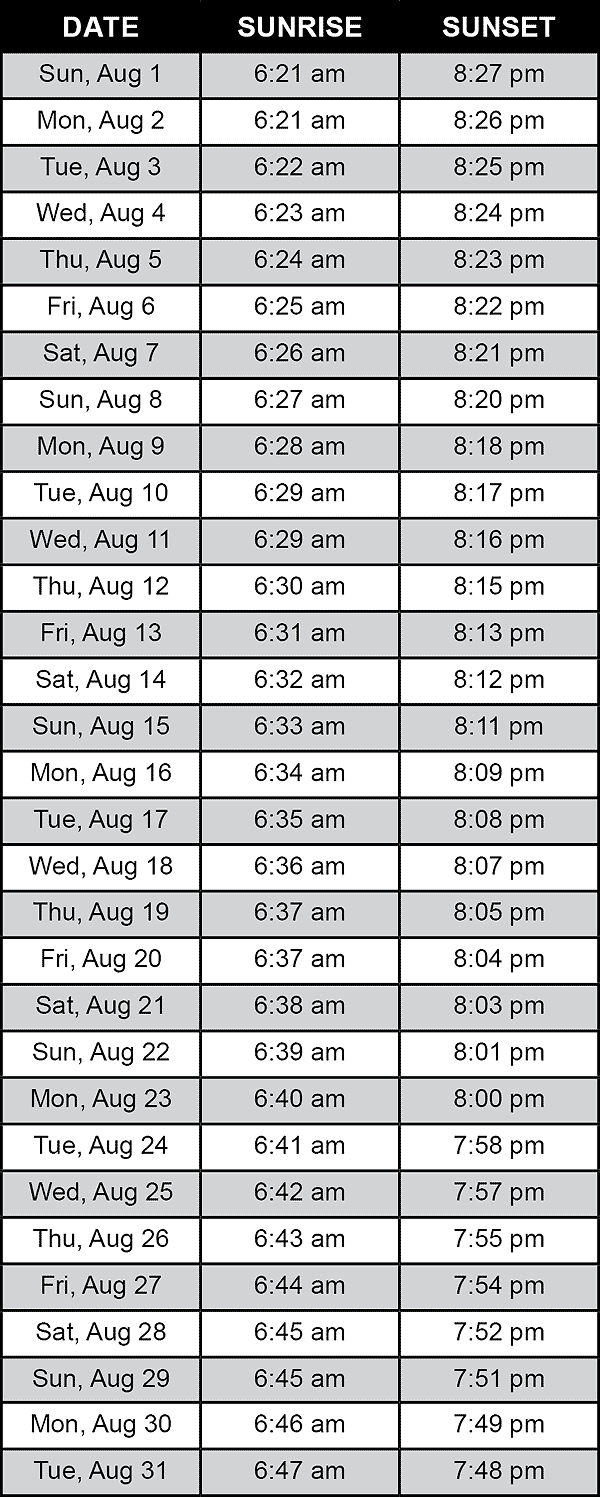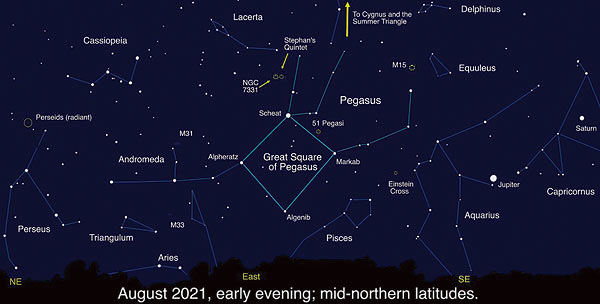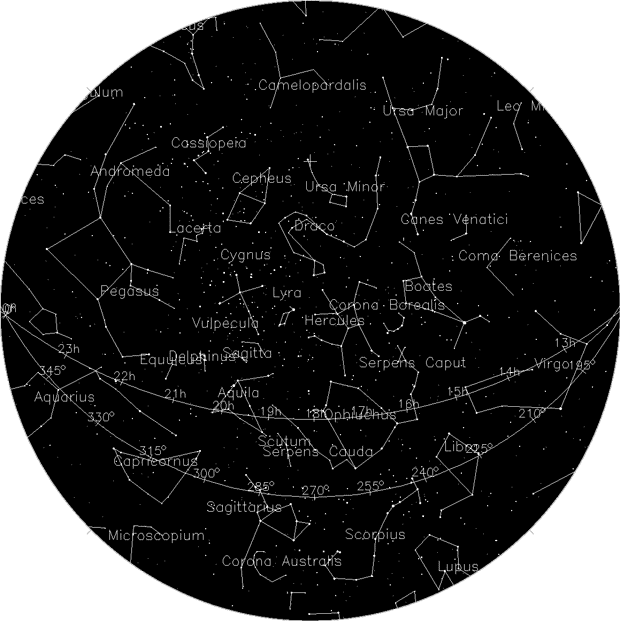DARK SKY HAPPENINGS - August 2021
Moab
UT (at City Hall)
38O34’ N Latitude
109O33’ W Longitude
4048 ft - 1234 m |
The Great Square of Pegasus
By David Prosper
Sunrise-Sunset
(The time of sunrise and sunset assumes a flat horizon. Actual time may
vary depending upon the landscape.) |
 |
The Summer Triangle may be the most famous seasonal star pattern, but during early August evenings another geometrically-themed asterism rises: the Great Square of Pegasus. August evenings are an excellent time to look for the Great Square, as it will be rising in the east after sunset. If not obvious at first, wait for this star pattern to rise a bit above the murky air, and remember that depending on your point of view, it may appear more like a diamond than a square. Look for it below the Summer Triangle, or to the southeast of nearby Cassiopeia at this time. As the Great Square rises in prominence during autumn evenings, it becomes a handy guidepost to finding more constellations, including some of the dimmer members of the Zodiac: Aries, Pisces, Aquarius, and Capricornus. Like the Summer Triangle, the Great Square of Pegasus is also huge, but Pegasus itself is even larger; out of the 88 constellations, Pegasus is 7th in size, and feels larger as the stars in its neighboring constellations are much dimmer.

There are many notable deep-sky objects found within the stars of Pegasus - ranging from easily spotted to expert level targets - making it a great constellation to revisit as your observing skills improve. Notable objects include the densely-packed stars of globular cluster M15, a great first target. Pegasus has quite a storied history in the field of exoplanet research: 51 Pegasi was the first Sun-like star discovered to be host to a planet outside our solar system, now officially named Dimidiam.
While observing Pegasus and its surroundings, keep your eyes relaxed and ready to catch some Perseids, too! August 2021 promises an excellent showing of this annual meteor shower. The crescent Moon sets early on the evening of the shower’s peak on August 11-12, but you can spot stray Perseids most of the month. If you trace the path of these meteors, you’ll find they originate from one point in Perseus - their radiant. Giant planets Jupiter and Saturn will be up all evening as well. Look south - they easily stand out as the brightest objects in the faint constellations Aquarius and Capricornus.
MOON HAPPENINGS
Aug 8 - New Moon at 7:50 am
Aug 15 - First Quarter at 9:19 am
Aug 22 - Full Moon at 6:01 am |
Moab Dark Skies mission is to promote the appreciation and conservation of Moab’s valuable and rare dark skies. Moab Dark Skies was established by the Friends of Arches and Canyonlands Parks in conjunction with the National Park Service and Utah State Parks Division of Natural Resources
For more information, check out our Facebook page. |
|


